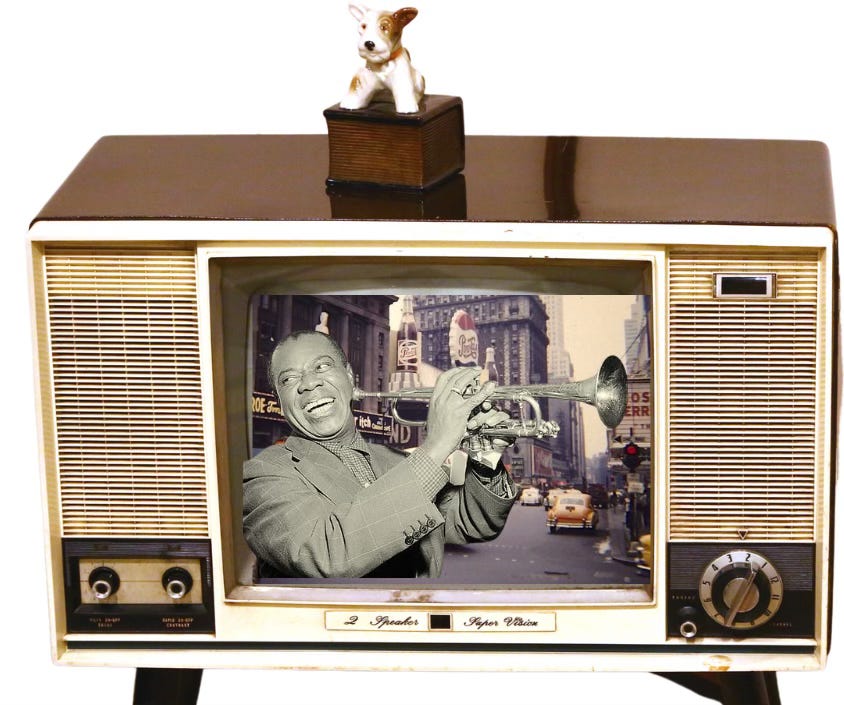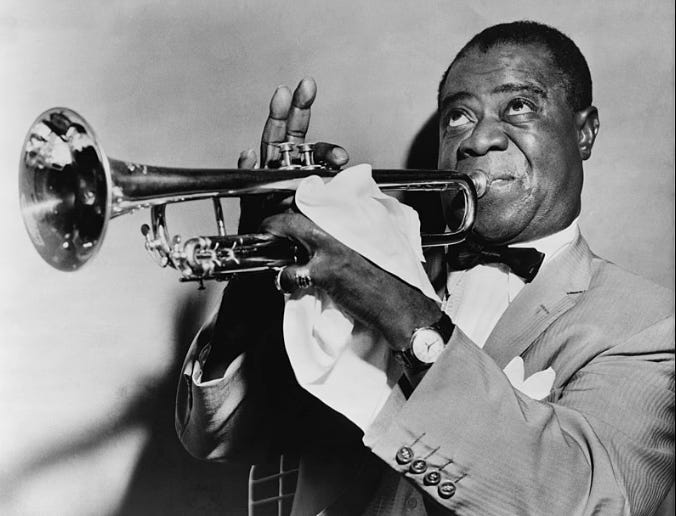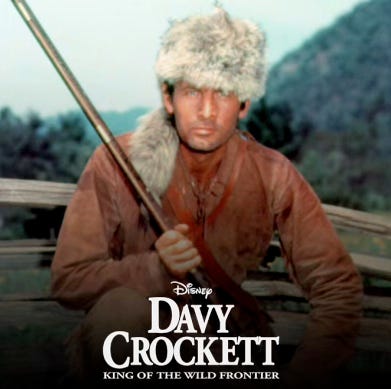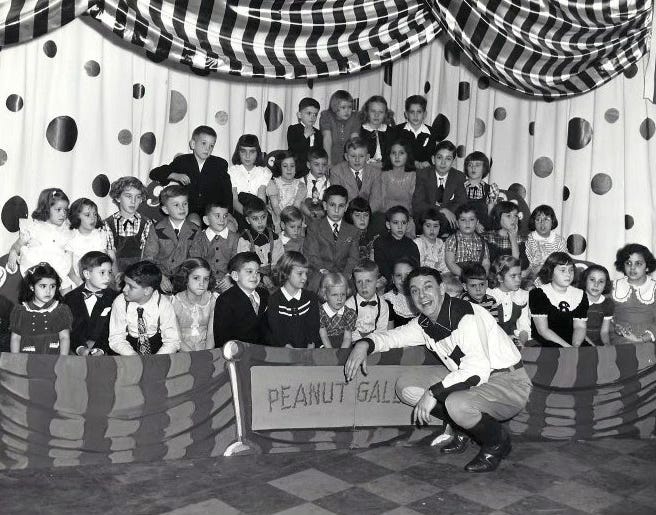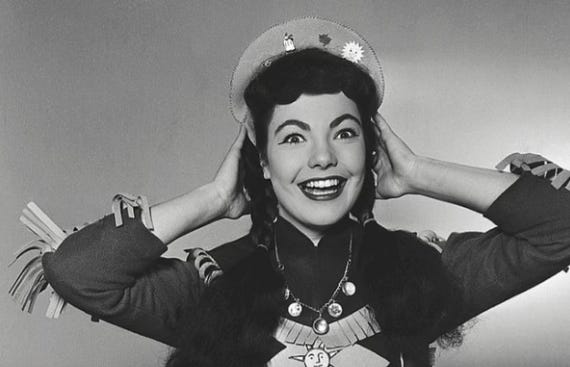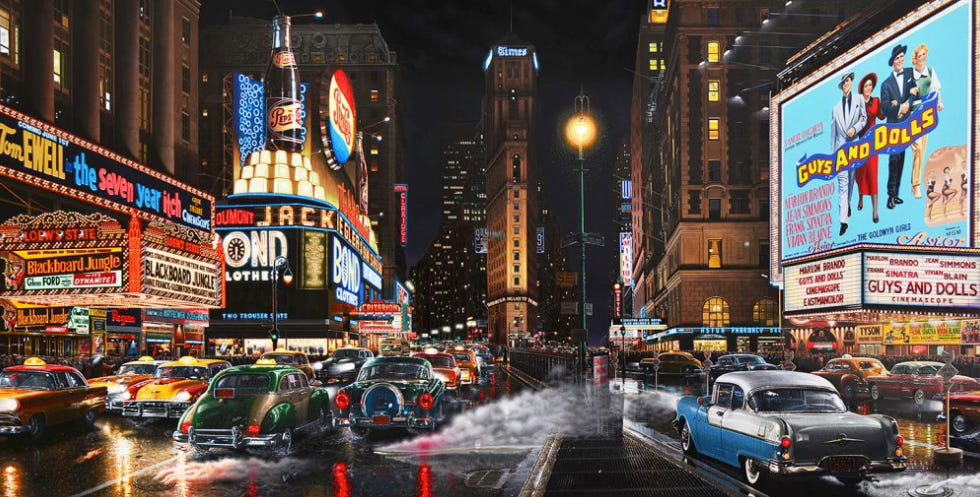From Howdy Doody to Louis Armstrong
Riding the Cosmic Wave: A Baby Boomer's Trip Through the Ages
Background Music: Charles Mingus - The Clown
After a tumultuous introduction to this unpredictable world, a C-section, my earliest days set the stage for the media saturated life I would lead. My crib was positioned in the living room, just a short distance from our modest 12-inch black and white television. From then on, I was inseparable from that screen, watching intently at all hours. I took everything I saw on TV as gospel, as children today believe everything they see on their smartphones as the truth.
As a charter member of the TV generation, there’s no doubt the medium has shaped me. I’m appreciative of its ability to enrich my perspectives and emotions but also, cautious of its influence over my perceptions and emotions.
Ten years before FCC Chairman Newton Minnow labeled it a "vast wasteland," I was born into a world where the TV was already switched on, part of the first generation to grow up with television as a ubiquitous presence in our lives.
I loved television but I also loved music. It quickly became the soundtrack to my life, the rhythm in my veins. Music echoed in my soul in a way that television never could. My love of music began in the mid-1950s, during the transition between the Swing era and the dawn of rock and roll. My dad's 8mm home movies show me gyrating in my underwear to "The Blue Tango," a popular record at the time. I was five.
Then an epiphany.
While tuning into the Ed Sullivan show, I stumbled upon the mesmerizing world of Jazz, enchanted by the legendary trumpeter, Louis Armstrong. Known affectionately as Pops, he stands as a titan in the annals of American art. His brief three-minute act on the Sullivan stage was a whirlwind of passion and spirit. I fantasized about leaping through the screen to be alongside him. His musical prowess, infectious energy, and sheer zest for life were utterly captivating.
My introduction to jazz set me on an unexpected path, one that would lead me to become an outsider, a non-conformist, and a champion of individuality and human rights.
But in the mid-50s, I was just a typical baby boomer. On Saturday mornings, I’d awaken early enough to be in front of the screen by eight, eating Kellogg’s Frosted Flakes and watching my favorite cartoons and serials. In the afternoon, I’d play baseball with my friends in one of our backyards.
During the week, after school, when I wasn’t playing baseball, I would tune in to the Mickey Mouse Club, the Howdy Doody Show, The Adventures of Superman, Lassie, Rin Tin Tin, and Hopalong Cassidy. Sunday nights, it was The Walt Disney Show, which featured classic cartoons, nature documentaries, and live-action dramas. Disney's Davy Crockett, King of the Wild Frontier miniseries was one of the first cultural milestones of television, and it left a lasting impression on me.
For a while, Davy Crockett stood as a symbolic American figure for young minds, representing independence, courage, and the spirit of adventure. The series was a sensation, sparking a wave of merchandise, from coonskin caps to toys and books. "The Ballad of Davy Crockett" became an anthem, echoing everywhere from radios to schoolyards. By the end of 1955, Americans had purchased over $300 million worth of Davy Crockett merchandise.
By the time I was five, I had a coonskin cap that I cherished as much as my assortment of baseball cards. In a twist of fate, decades later, I penned a play, The King of the Wild Frontier, about a man with a peculiar desire: to don a coonskin cap during intimate moments, all the while belting out the Davy Crockett theme. In short, a comedy steeped in self-reflection.
The prevalent good-versus-evil narrative in those shows subtly nudged me towards adherence, underscoring the significance of respecting authority. Embracing the era's American way, I transitioned from a Cub Scout to a Boy Scout. Television aligned my steps with the cookie-cutter conformity of the 1950s.
Until I discovered Jazz and African-Americans, I was blissfully unaware of any alternative to this norm. Nor did I seek one. For the most part, I was content. But that contentment was short-lived.
Since then, we’ve shifted from a monolithic, one-size-fits-all TV culture to a sprawling, fragmented, choose-your-own-adventure hodgepodge. Whether this is a mind-blowing evolution or a dizzying descent into digital mayhem is up to you.
For little Bret, it was all good. My favorite was Howdy Doody, an afternoon show I never missed. West Hartford was two and a half hours from New York City by train, and when I was six, my mother booked me a spot in the Howdy Doody Peanut Gallery for my first trip to the Big Apple. That day transformed my life.
Stepping into Grand Central Station for the first time was an electric jolt. I had never experienced such a vast and bustling space before. The towering ceilings, the bustling crowds, and the cacophony of sounds were all overwhelming, but in a thrilling way. As a six year old, was too young to understand it, but later realized then that New York City was a place of limitless possibilities, where dreams and nightmares danced side by side.
After my first taxi ride through the bustling streets of Midtown, my eyes wide with wonder, we took the elevator to the eighth floor of NBC Studios at Rockefeller Center. It wasn't just a studio with lights and cameras; it was the core of something larger, and I felt it deeply.
Buffalo Bob, the genial cowboy-dressed host of the Howdy Doody Show, interacted with the marionette star, Howdy Doody, and the other puppets. Bob's friendly, trustworthy, and paternal demeanor embodied the post-World War II optimism and simplicity that characterized much of early American television. I felt very much at home in that studio, as if I belonged there.
Princess SummerFallWinterSpring captivated me. She was my first glimpse into the mysterious and enthralling world of femininity. As a six-year-old boy, I couldn't fully understand why I was so drawn to her, a Native American, but my fascination with exotic women began that day. Her presence ignited a sensual fire within me. My goodness, what were these strange new sensations that coursed through me?
Portrayed by caucasian actress Judy Tyler, the native American princess was my first experience of beauty and the feminine mystique. She was quite different than the women in my community, Jewish women of all ages, from bubbies to babies. Her character was mysterious and alluring, and my fascination with her helped me to begin to understand attraction and gender. In the language of my people, she was a hot shiksa.
My trip to New York City as a six year old sparked a lifelong dream of living there. My resolve to move was unwavering, and it guided my decisions and actions. As I grew up, I discovered my passion for storytelling and my deep connection to TV, movies, and music. New York City became my North Star, my destination of destiny. And, crucially, the epicenter of Jazz.


